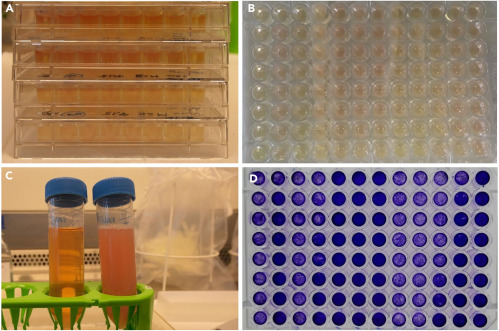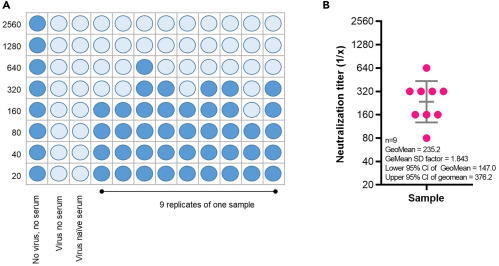
Neutralization data for #omicron is out. By request of @andrew_croxford, I try to explain how scientists investigate #neutralization. First, it's lab-based data. It’s impossible to directly conclude from neutralization data that #vaccines will not work anymore in the field. 1/X
@andrew_croxford Second, assays are legion! I developed one myself, which is different to the one used by the lab of e.g., @CiesekSandra, in terms of #virus, incubation times, etc. Keep that in mind if you compare two papers directly. I will explain how I did my assay. 2/X
@andrew_croxford @CiesekSandra Third, you must understand that such an assay generates data about neutralization of the virus by antibodies in the serum. These assays do not allow for measuring the effect of e.g., T cells or memory B cells.
@sailorrooscout talks about that here:
@sailorrooscout talks about that here:
https://twitter.com/sailorrooscout/status/14683226264016691253/X
@andrew_croxford @CiesekSandra @sailorrooscout How does a neutralization assay work? Virologist may know plaque-forming-assays to count the number of viral particles. One can use the same principles to calculate the effect of neutralizing antibodies on the virus. en.wikipedia.org/wiki/Virus_qua… 4/X
@andrew_croxford @CiesekSandra @sailorrooscout The method is easy: A layer of adherent cells is infected by the virus. The cells are incubated for the next 2-3 days and during this time, the virus will kill infected cells, because SARS-CoV-2 is a cytopathic virus (cells literally explode). en.wikipedia.org/wiki/Cytopathi… 5/X
@andrew_croxford @CiesekSandra @sailorrooscout This process is visible to the naked eye or under a microscope, because the cells are colored with a violet dye. Figure D shows an almost total disruption of the cell layer in some wells where the virus was active (intact cells are fully colored in violet dye). 6/X 

@andrew_croxford @CiesekSandra @sailorrooscout How can we analyze neutralizing antibodies using such an assay? Preincubate the virus with sera from convalescent patients or vaccinated people! Neutralizing AB (nAB) will destroy the virus particles. Therefore, the visible cell destruction will be reduced. Quite easy, not? 7/X
@andrew_croxford @CiesekSandra @sailorrooscout In practice, it’s a bit harder, because there are a lot of parameters influencing the cells and the virus. What you do is to dilute the serum to find the concentration needed for neutralization. You want enough viral particles to get some cell disruption, but not total. 8/X
@andrew_croxford @CiesekSandra @sailorrooscout One major problem is to distinguish cell disruption due to cytopathic effect from cell death due to incubation conditions. It took a lot of experiments to find the optimal conditions - and they may be different for assays from different labs. Important! 9/X
@andrew_croxford @CiesekSandra @sailorrooscout Since you know the concentration of serum and number of viral particles in every well of the cell culture plate, you can calculate at what concentration the #antibodies are legion and able to destroy most viral particles. This dilution gives you the neutralization titer. 10/X
@andrew_croxford @CiesekSandra @sailorrooscout That’s the outcome you see in most papers: neutralization titers. Caveat: there’s a difference how you publish such data. What we did was using a digital system. At what dilution of antibodies is the cell layer still intact? Black and white, no in between. 11/X
@andrew_croxford @CiesekSandra @sailorrooscout Example picture: 4th column shows a neutralization titer of 160. That means, the initial serum from a patient was diluted 160 times. At this concentration of AB, the nAB won and destroyed most viral particles. You see what the virus without antibodies does? Kill, kill, kill! 12/X 

@andrew_croxford @CiesekSandra @sailorrooscout You can compare such titers for #delta with titers for #omicron. That’s how you get reductions in percentages like @CiesekSandra. Caveat: I think, she used a different system commonly called TCID50: at what dilution of antibodies does the virus kill 50% of the cells. 13/X
@andrew_croxford @CiesekSandra @sailorrooscout
https://twitter.com/CiesekSandra/status/1468465347519041539
It’s important to keep in mind that assays differ from lab to lab, in terms of not only culture conditions, but also type of virus (live virus or synthetically engineered virus called #pseudotype virus) and analysis method. 14/X
For example did we use 96-well plates, Vero cells and a pseudotype virus. We based neutralization titers on some cell layer disruption or none at all. Another method would be to use 12-well plates and just count the number of plaques. 15/X
Plaques are huge holes in the cell layer because of massive cytopathic effect. Those assays are commonly called PFU-assays or plaque-forming assays. 16/X
Again, there are a lot of different assays. Some are explained nicely in this paper. @mugecevik made a nice thread about it here:
https://twitter.com/mugecevik/status/1466845357686640640nature.com/articles/s4154… 17/X
@mugecevik My own paper is this one. If you are interested in the details how to do one single type of assay, read about it here: sciencedirect.com/science/articl… @STARProtocols 18/X
@mugecevik @STARProtocols To do a neutralization assay, you incubate serum from patients with live virus. nAB will kill the viral particles, which in turn can't infect cultured cells. Differences compared to no AB are visible because cells are stained violet (cytopathic effect is visible). 19/X 

Finished! I hope this thread helped you to understand how neutralization assays work, what some of the differences between assays are and what data they generate. I linked some threads using better English and talking about the bigger picture. 😅20/20
@andrew_croxford Neutralization data shows that neutralization to #omicron is reduced, but #boosters and hybrid immunity (vaccines + infection) still generate some neutralization. Therefore, take the shot! #VaccinesWork
@andrew_croxford But it's to early make conclusions to the level of immune escape of #omicron. For example, we don't know yet how much the T-cell response is affected. This thread tries to estimate vaccine effectiveness (at this point only guessing!):
https://twitter.com/DiseaseEcology/status/1468520424409419776
It would be nice to have correlates of protection against #omicron too. With such correlates, doctors and scientists can estimate the level of protection of a patient. nature.com/articles/s4159…
Another important conclusion from this paper: "To overcome assay variability, it is postulated that one golden assay based on a specific protocol should be established, which would serve as a reference for in vitro neutralization analysis." nature.com/articles/s4154…
• • •
Missing some Tweet in this thread? You can try to
force a refresh



